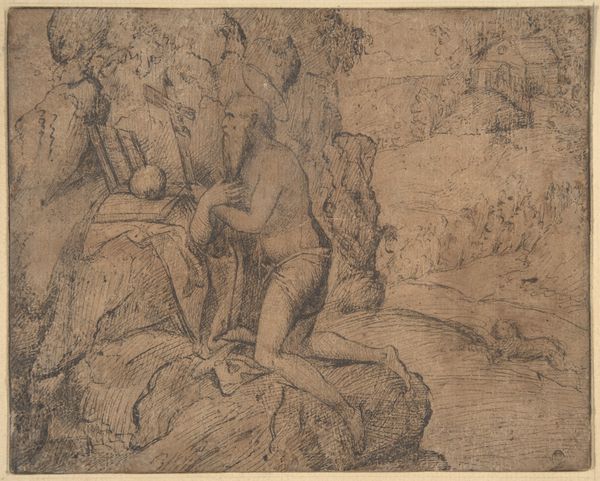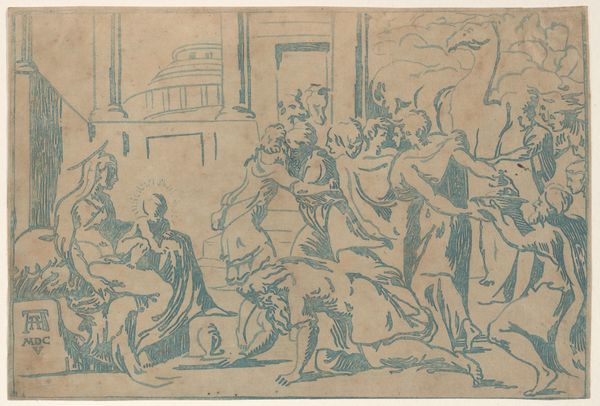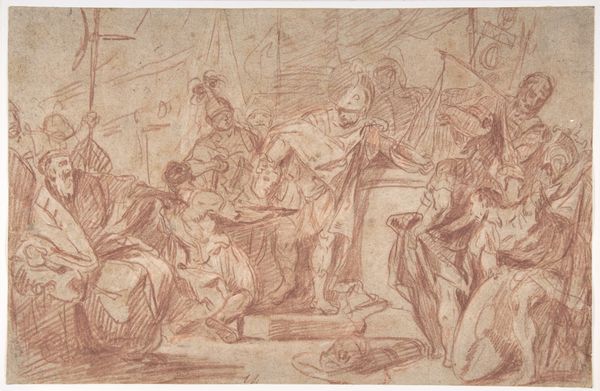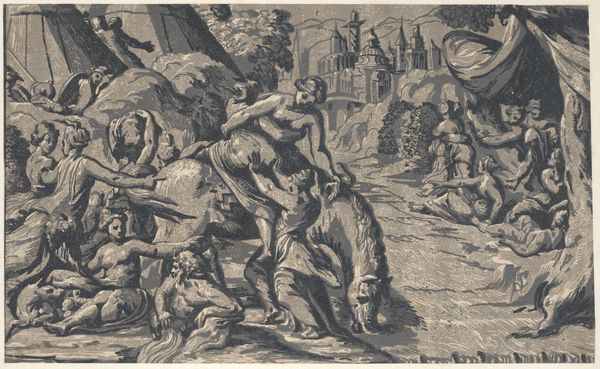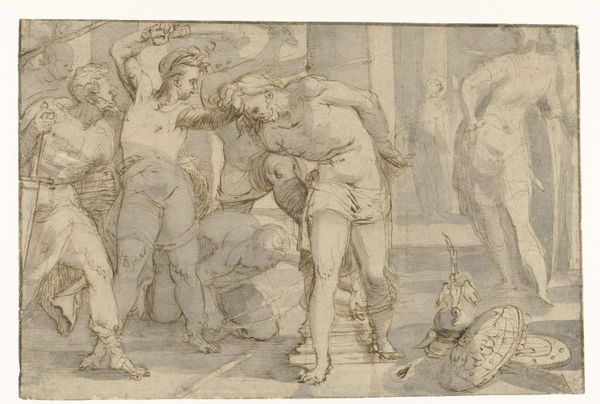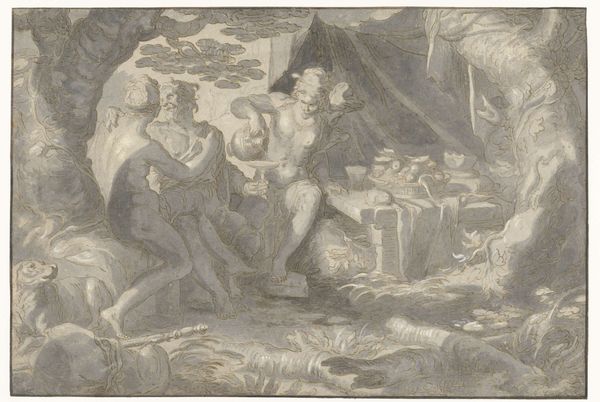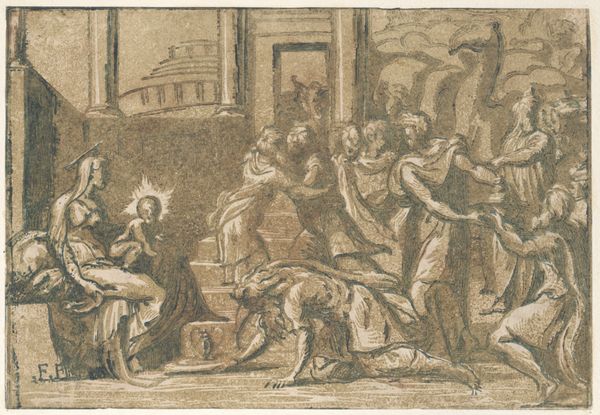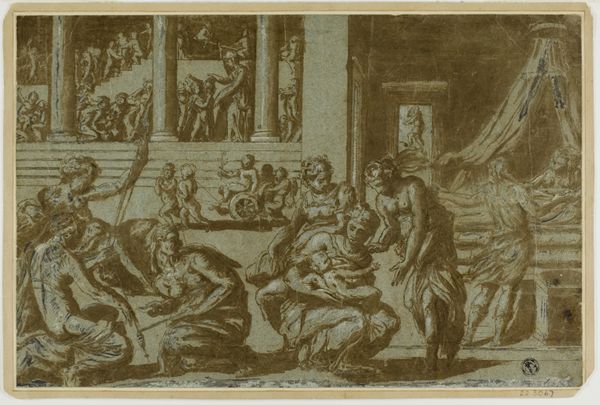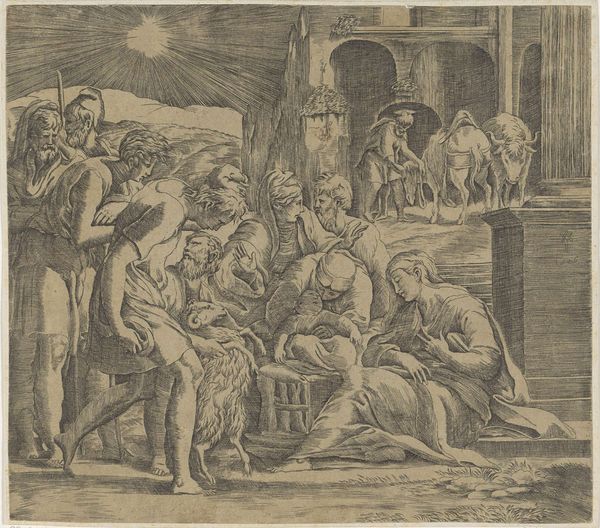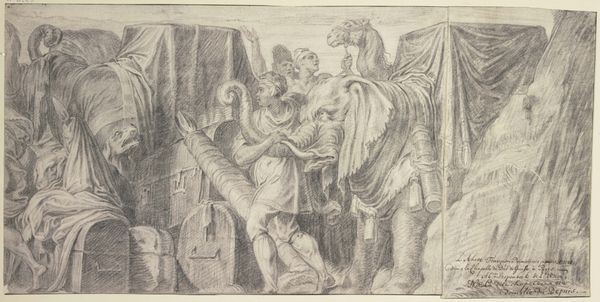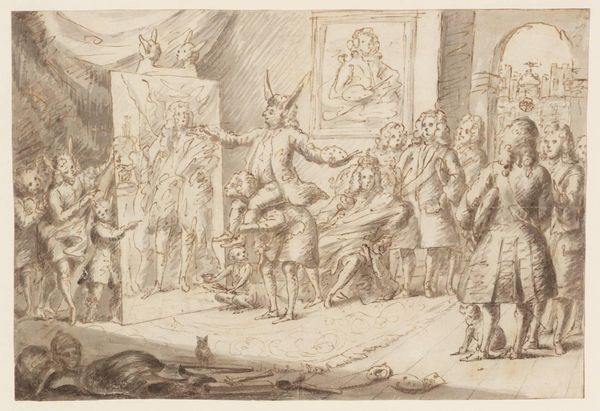
drawing, ink, pen
#
drawing
#
ink drawing
#
allegory
#
pen sketch
#
mannerism
#
figuration
#
ink
#
pen
#
history-painting
Dimensions: height 90 mm, width 117 mm
Copyright: Rijks Museum: Open Domain
Editor: This ink drawing, "The Birth of Minerva from the Head of Jupiter," by Jan Snellinck, dates from around 1575-1580 and is currently housed at the Rijksmuseum. I'm struck by the intensity of the scene – there's so much tension and physicality in the figures. How do you interpret this work within its historical context? Curator: That's a great observation. Snellinck's work offers us a glimpse into the patriarchal structures prevalent during the late 16th century. While seemingly celebrating Minerva's birth, we can also examine the allegory through a feminist lens. How is power being constructed and asserted here? Note Jupiter, enthroned, embodying divine authority literally birthing wisdom – Minerva – from his own head, effectively bypassing female reproductive agency. Editor: That's a fascinating point. I hadn’t considered the absence of a female figure in the birthing process as a deliberate statement about power. So, you're saying Minerva’s unusual birth denies the role of women? Curator: Precisely. Consider Mannerism as a style and its artifice; bodies are contorted and exaggerated. Where is the 'natural' here? This visual rhetoric might be used to promote a vision of authority that relies upon control, intellect, and force rather than more communal means of producing or legitimizing. What is laboring like? How do other figures embody this statement, perhaps with their tools and strained movements? Editor: The figure wielding the axe seems directly complicit. So the act of Minerva’s birth becomes an expression of not only Jupiter’s power but also of a broader social order? Curator: Exactly. We can view the "Birth of Minerva" as more than a simple mythological scene. Instead, it reflects anxieties surrounding lineage, intellectual authority, and even the suppression of female voices within a patriarchal framework. It's vital to deconstruct those traditional narratives. What’s your takeaway here? Editor: I’m now seeing the drawing as a complex visual argument about authority, rather than just a depiction of a mythological event. It challenges the viewer to question power dynamics. Thanks so much. Curator: It's been insightful to reframe this Mannerist piece and analyze the symbolic violence inscribed within its creation myth.
Comments
No comments
Be the first to comment and join the conversation on the ultimate creative platform.
